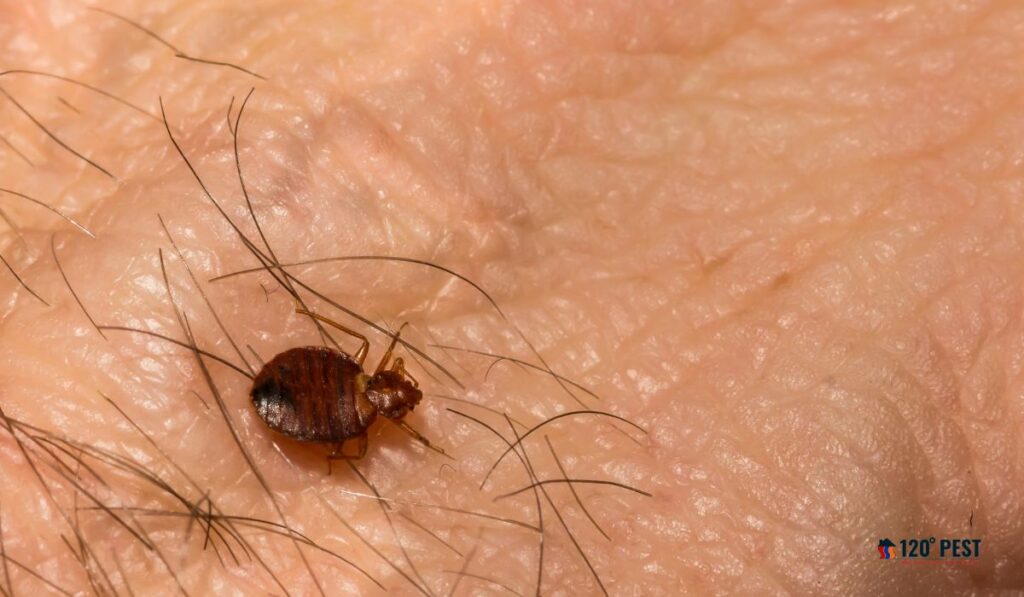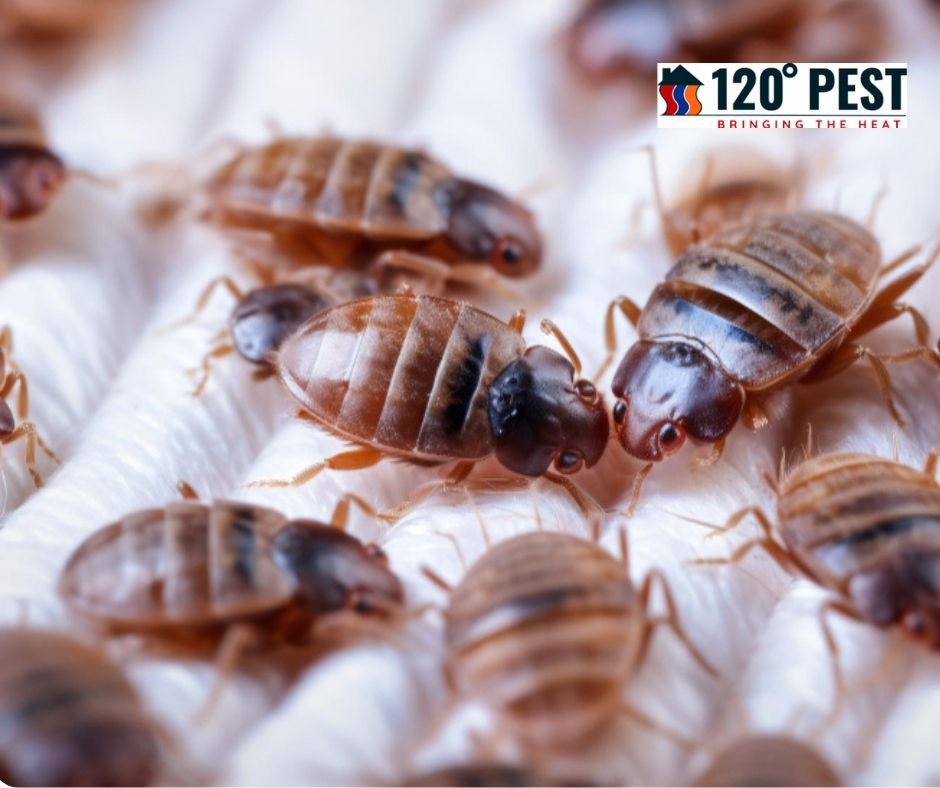Bed bugs, scientifically known as Cimex lectularius, are small, reddish-brown parasitic insects that feed on the blood of humans and animals. Despite their name, they are not limited to infesting beds but can be found in various locations where humans dwell, including furniture, luggage, and even clothing. The resurgence of bed bug infestations in recent years has posed significant challenges to homeowners, hoteliers, and pest control professionals worldwide, highlighting the urgent need for effective eradication strategies.
Understanding Bed Bug Infestations
Recognizing the signs and symptoms of a bed bug infestation is crucial for early detection and intervention. Common indicators include bites on the skin, bloodstains on sheets and mattresses, and the presence of shed skins and fecal matter in infested areas. Moreover, identifying bed bugs and their eggs accurately is essential for targeting treatment efforts and preventing further spread.
Importance of Effective Chemicals
Chemical treatment remains one of the most widely used methods for bed bug eradication due to its efficiency and effectiveness. However, choosing the right chemicals and applying them correctly is paramount to achieving successful outcomes while minimizing health and environmental risks.
Types of Chemicals for Bed Bug Eradication
Insect Growth Regulators (IGRs): These chemicals disrupt the growth and development of bed bugs, preventing them from reaching maturity and reproducing.
Pyrethrins and Pyrethroids: Derived from chrysanthemum flowers, pyrethrins and synthetic pyrethroids are neurotoxic to bed bugs, causing paralysis and eventual death.
Desiccants: Desiccants such as diatomaceous earth and silica gel work by absorbing the waxy outer layer of bed bugs, leading to dehydration and death.
Biochemicals: Natural compounds like neem oil and essential oils possess insecticidal properties and are considered safer alternatives to synthetic chemicals.
Neonicotinoids: Neonicotinoids are a class of insecticides that disrupt the nervous system of bed bugs, leading to paralysis and death. They are often applied as liquid formulations or incorporated into baits to attract and eliminate bed bugs over time.
Pyrroles: Pyrrole insecticides interfere with the functioning of bed bug nerve cells, causing rapid paralysis and mortality. They are known for their quick knockdown effect and residual activity, making them suitable for both immediate and long-term control of bed bug infestations.
Insecticidal Soaps: Insecticidal soaps contain fatty acids derived from plant or animal sources, which disrupt the cell membranes of bed bugs, leading to dehydration and death. These soaps are considered low-risk alternatives to conventional insecticides and are often used in conjunction with other treatment methods.

Botanical Extracts: Botanical extracts, such as those derived from plants like rosemary, thyme, and peppermint, contain natural compounds with insecticidal properties. These extracts work by targeting the nervous system or metabolic processes of bed bugs, providing a safer and environmentally friendly option for pest control.
Considerations Before Chemical Treatment
Before initiating chemical treatment for bed bugs, it is essential to assess the severity of the infestation, considering factors such as the extent of spread and the presence of vulnerable individuals, such as children and pets. Additionally, environmental conditions, such as temperature and humidity, can influence the effectiveness of chemical treatments and should be taken into account.
Preparing for Chemical Treatment
Proper preparation is key to maximizing the efficacy of chemical treatments and ensuring the safety of occupants. This may involve decluttering infested areas, laundering bedding and clothing, and sealing cracks and crevices to prevent bed bugs from escaping or reinfesting treated areas.
Application Methods
Various application methods can be employed to administer chemical treatments for bed bug eradication, including:
Spray Applications: Liquid insecticides can be applied directly to infested areas using handheld sprayers or professional-grade equipment.
Dust Applications: Insecticidal dusts are dispersed in voids, cracks, and other hard-to-reach areas where bed bugs may harbor, ensuring thorough coverage.
Foggers and Fumigation: These methods involve the release of insecticidal gases or vapors to penetrate deep into infested spaces and eliminate bed bugs.
Post-Treatment Measures
After chemical treatment, ongoing monitoring and evaluation are necessary to assess the effectiveness of the intervention and detect any signs of residual infestation. Implementing preventive measures, such as regular inspections and maintenance, can help prevent future infestations and ensure long-term protection.
Combating Bed Bug Eggs
Eradicating bed bug eggs poses a unique challenge due to their resilience and ability to withstand conventional insecticides. However, certain chemicals, such as IGRs and desiccants, can disrupt the development of eggs and prevent them from hatching, thereby interrupting the bed bug life cycle and reducing the risk of reinfestation.
Safety Precautions and Health Risks
While chemical treatments can be highly effective against bed bugs, they also pose potential health risks to humans and pets if not handled properly. Wearing appropriate protective gear, such as gloves and respirators, and following recommended safety guidelines can minimize exposure and mitigate adverse effects.
Environmental Impact
Concerns about the environmental impact of chemical treatments have prompted the development of eco-friendly alternatives and sustainable pest control practices. Proper disposal of chemical residues and adherence to integrated pest management principles can help minimize harm to the environment and non-target organisms.
Alternatives to Chemical Treatments
In addition to chemical treatments, alternative methods such as heat treatment, vacuuming, and steam cleaning have gained popularity for their efficacy in eliminating bed bugs without the use of potentially harmful chemicals. These non-chemical approaches offer viable options for environmentally conscious consumers and those seeking safer alternatives.
Professional vs. DIY Approaches
While some individuals may opt for do-it-yourself (DIY) bed bug treatments to save costs, professional intervention is often recommended for severe or recurring infestations. Pest control professionals have the knowledge, experience, and access to specialized equipment necessary to address complex infestations safely and effectively.
Conclusion
In conclusion, effective chemical treatments play a crucial role in the eradicationof bed bugs and their eggs, providing homeowners, hoteliers, and pest control professionals with a powerful tool against these resilient pests. By understanding the different types of chemicals available, assessing the severity of infestations, and adhering to safety protocols, individuals can effectively combat bed bugs while minimizing risks to health and the environment. However, it is essential to recognize that chemical treatments are just one aspect of comprehensive bed bug management strategies. Integrated approaches that combine chemical treatments with preventive measures, monitoring, and ongoing maintenance are key to achieving long-term success in bed bug eradication efforts. By prioritizing safety, sustainability, and effectiveness, we can create healthier living environments and protect against the impact of bed bug infestations for years to come.
FAQs
What are bed bugs, and why are they a problem?
Bed bugs are small, reddish-brown insects that feed on the blood of humans and animals. They are a problem because their presence can lead to discomfort, allergic reactions, and sleep disturbances.
How do I know if I have a bed bug infestation?
Common signs of a bed bug infestation include bites on the skin, bloodstains on sheets and mattresses, and the presence of shed skins and fecal matter in infested areas.
Why are chemical treatments preferred for bed bug eradication?
Chemical treatments are preferred for bed bug eradication because they are often highly effective at eliminating bed bugs and their eggs. They can reach into cracks and crevices where bed bugs hide and provide residual protection against future infestations.
What types of chemicals are used for bed bug eradication?
Common types of chemicals used for bed bug eradication include insect growth regulators (IGRs), pyrethrins and pyrethroids, desiccants, and biochemicals such as neem oil and essential oils.
Are chemical treatments safe for humans and pets?
When used according to label instructions and with proper safety precautions, chemical treatments can be safe for humans and pets. However, it is essential to follow recommended guidelines and avoid direct contact with treated surfaces until they have dried completely.
How long does it take for chemical treatments to eliminate bed bugs?
The time it takes for chemical treatments to eliminate bed bugs can vary depending on factors such as the extent of the infestation, the type of chemicals used, and environmental conditions. In some cases, multiple treatments may be necessary to achieve complete eradication.
Can I apply chemical treatments myself, or do I need to hire a professional?
While some individuals may choose to apply chemical treatments themselves, hiring a professional pest control expert is often recommended for more severe or persistent infestations. Pest control professionals have the knowledge, experience, and access to specialized equipment necessary to address complex bed bug problems effectively.
How can I prepare my home for chemical treatment?
To prepare your home for chemical treatment, you should declutter infested areas, launder bedding and clothing, and seal cracks and crevices where bed bugs may hide. It is also essential to follow any specific instructions provided by the pest control professional.
Are there any eco-friendly alternatives to chemical treatments?
Yes, there are eco-friendly alternatives to chemical treatments for bed bug eradication, including heat treatment, vacuuming, and steam cleaning. These methods can be effective at eliminating bed bugs without the use of potentially harmful chemicals.
What should I do after chemical treatment to prevent future infestations?
After chemical treatment, it is essential to implement preventive measures such as regular inspections, maintaining cleanliness, and sealing entry points to prevent future infestations. Additionally, ongoing monitoring and prompt action can help detect and address any new infestations early on.




